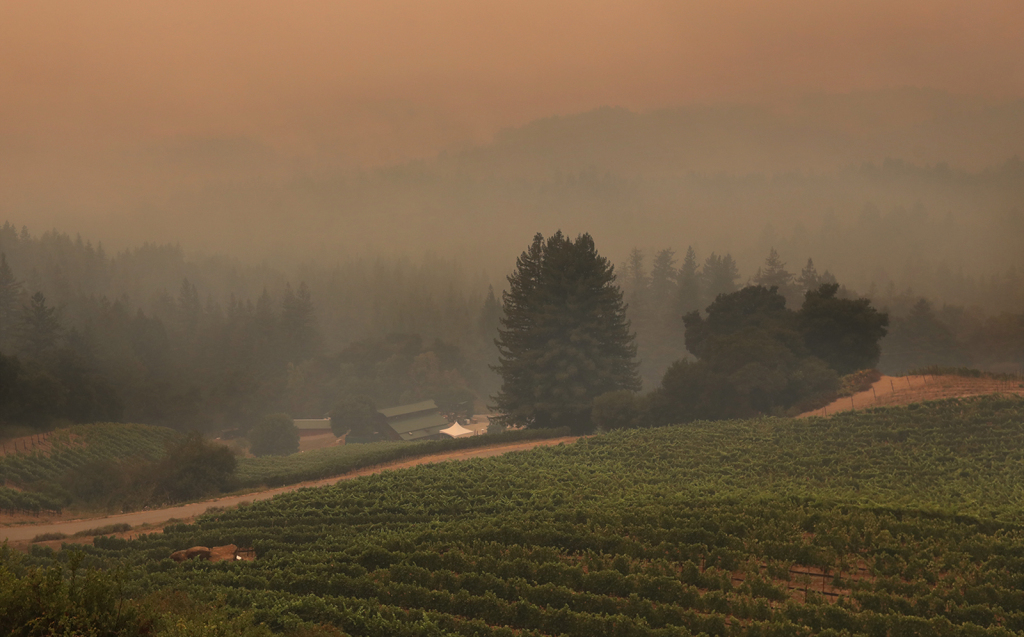Bradley Brown of Big Basin Vineyards lost his home and pretty much all the fruit from his estate vineyards in the CZU fires. He feels fortunate that his winery building, where he had just completed a large bottling run, survived. Big Basin’s tasting room in the Saratoga Village is open for outside service on weekends.
Knee-deep in harvest in mid-October, Brown said, “Yes these are crazy times. We have a bunch of fruit coming in this coming week, so things are a bit hectic. We are getting all of our normally contracted fruit from Alfaro, Lester, Coastview, Howard, Wirz, Rodnick Farm, etc. All we have left to bring in is the Coastview bordeaux varieties and the grenache, and the Rodnick Farm mourvedre.
“So far, things are looking pretty good, and we have not detected any smoke taint in the wines we have fermented.”
Brown had to borrow fermenters from Dave Moulton at Burrell School and Jim Cargill at House Family. “And we still need a couple more to make sure we don’t run out of space. We did purchase 10-plus fermenters, but normally we use 24-28 at once.”
The winemaker said the estate vineyard on Memory Lane in Boulder Creek is 10-20 percent badly singed, with some vine mortality possible.
“Too early to tell,” he added. “Of course, the entire crop is a loss this year, and we had $100,000 into farming it this year. And of course, none of that is insured.”
Jim Cargill of House Family Vineyards in the Saratoga hills was optimistic that his estate fruit had escaped the vagaries of smoke impact.
“The harvest season started off earlier than it has in recent years, by about two to three weeks,” Cargill said. “The Burgundian varietals, chardonnay and pinot noir, really came off the vine earlier than normal. However, the vineyards have seemed to settle into pace and the bordeauxes are trending about normal.”
Thus far, Cargill deems the flavors very promising, despite the angst during the fires about potential smoke impact.
“The vintners have really pulled together with testing results from their respective vineyards,” he said. “This information helps make harvest and processing decisions for vintners easier.
“Fortunately, our region has not seen the smoke impact that other regions have experienced. While initial concerns were high, The Santa Cruz Mountains AVA (American Viticultural Area) was largely spared, except for a few pockets. This is not to diminish the devastation from the fires in our region.”
Cargill was able to harvest fruit from Sonoma County, specifically the Petaluma Gap. “The fruit from that region was protected by favorable weather patterns,” he said.










